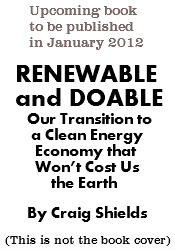There is nothing magic about the number 7 billion, which, according to the United Nations, became the population of planet Earth sometime earlier today. The resources available to feed, clothe, house and transport the world’s people aren’t stretched far thinner today than they were yesterday. But it’s good to have milestones like this to cause us to think about where we’re going.
As discussed in this NPR segment, the critical pinch points of a growing population are not so much associated with running out of room, but running out of stuff. The populations that are growing fastest, those in India and Africa, are going to want to live like we do here in the US, i.e., as mega-consumers.
So what’s the big deal? Well, it’s that delivering on that promise of lots of stuff requires vast amounts of energy that currently can come only from fossil fuels and nuclear, all of which come with significant costs to the health and safety of our environment – as well as to us personally.
As physicist Dan Kammen, head of an energy laboratory at the University of California, Berkeley notes, “What’s needed is renewable energy that’s cheap and won’t run out. But by essentially every measure, we’re not moving fast enough.”




